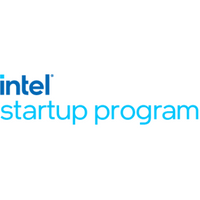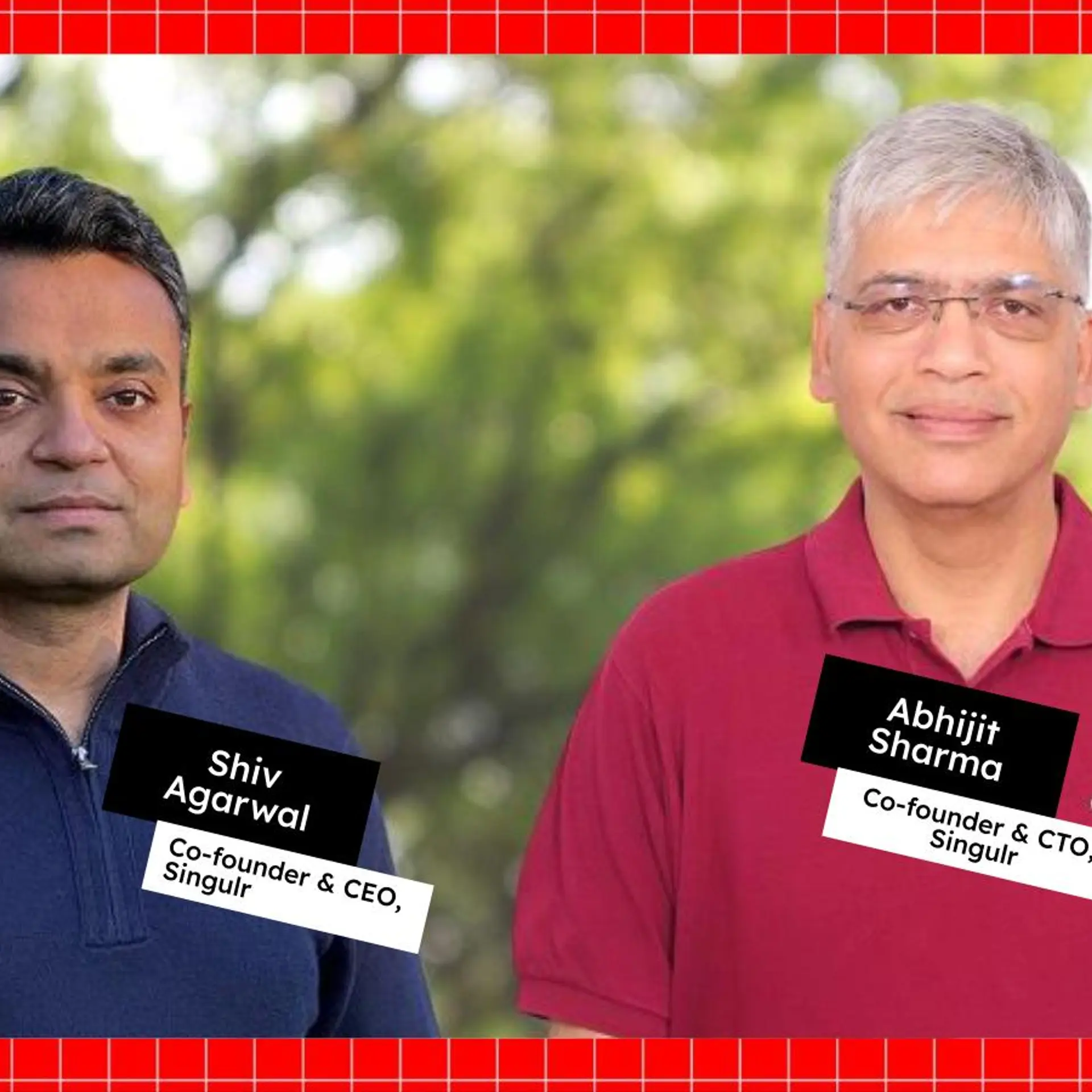
Intel Startup Program
View Brand PublisherLightSpeed Photonics’ next-gen processors, powered by Intel Startup Program, are set to revolutionise data processing
By integrating photonics with processors, LightSpeed Photonics is working to make data processing work up to 10 times faster than existing technology. Here’s how.
Millions use technology in their everyday lives, from the most mundane of tasks like ordering food or bingeing your favourite TV show, to incredible utilisation such as life-saving remote surgery from across the globe – all of it creating an insane amount of data that needs to be processed and transferred within a matter of seconds.
In fact, we’re expected to see about 463 EB (exabytes) of data being produced every day by the year 2025, all of it travelling on cutting-edge telecommunications networks such as 5G (with 6G well on its way by then, we hope).
All of that data needs processing power that today’s data centres may not be able to handle as efficiently as they do today. One of the paths that the processor industry is shifting towards is photonic integration that uses light or lasers to transfer data rather than electrical cables – a domain that LightSpeed Photonics is pioneering.
The need for speed
LightSpeed Photonics CEO Dr Rohin Kumar Y explains, “At LightSpeed, we get data into chips directly with lasers. No cables! Our mission is to enable future datacenters with at least 10 times more data processing capabilities than what current systems are capable of.”
His co-founder and CTO Ramana V. Pamidighantam adds, “Systems teams are looking for better computer architecture, while development is segmented into computing algorithms, semiconductors, and photonics. We bring a holistic solution to the problem from a systems approach.”
By integrating photonics with existing chip models, the company’s proof-of-concept developments have so far succeeded in developing a low footprint (6.5 x 4.0 mm) component to interconnect processors directly using light. These tiny components can be integrated into existing processor packages for improved performance.
Visions of the future
Officially collaborating in 2021, the duo began working together after Dr Rohin realised the importance of building real-world computing systems that are future-ready. A second-time entrepreneur with about 12 years of experience in research and consulting in distributed computing algorithms, embedded systems-IOT, and VLSI (very large scale integration), Dr Rohin partnered with Ramana to help bring that vision closer to reality.
Working for more than 35 years in the field of optics, photonics, and semiconductors at Philips, Agilent, and the Agency for Science, Technology and Research’s (A*STAR) Institute of Microelectronics (IME) in Singapore, Ramana actively developed core technologies for electronic-photonic integration and integrated circuit packaging at IME.
“My co-founder Ramana is an expert in miniaturised integration of optics and electronics specialising in semiconductor packaging, in fact, pioneering some of the core aspects. I saw the commercial potential this has in the future of computing and we joined hands together to start LightSpeed,” Dr Rohin says.
The two honed their solution into its current form after working on multi-channel video analytics on their initial hardware/software platform for a trial project with a major camera manufacturer. Dr Rohin and Ramana decided to stay away from direct applications, and instead chose to focus on system integration and architecture level, making their platform hardware agnostic. It was then that they began working with Intel to conceptualise their hardware design and development.

The Intel connect
Ramana says that Intel’s support gave them the initial momentum to design their computing architecture. “They provided die-level details and application information that formed the foundation for our superstructure, and gave us an excellent platform by connecting us with various stakeholders and partners,” he explains.
Intel mentoring was critical for LightSpeed’s development, Dr Rohin adds, saying, “As a major computing chip manufacturer, Intel’s role was all the more crucial as we are doing a System-in-Package development around Intel’s FPGA (field programmable gate arrays) bare dies. Intel technical mentoring as well as their business unit’s and system architect’s feedback has been crucial in the early stages of our system architecture.”
LightSpeed’s mentors from Intel believe the company is working on a solution that will be essential for computing in the near future. “The technology they’ve chosen is a niche area, you won’t find too many companies working in this domain. Silicon photonics is one of the deeper areas of physics research, and them being pioneers and their partners having expertise of over 30 years, that’s exciting,” says Israr Ahmed Sheikh, FAE Manager - South Asia Pacific, Intel.
About the kind of mentoring Intel provided LightSpeed, Arvindh Rajasekaran, Principal Engineer - Power management, Power delivery systems, Platform architecture at Intel, says, “Visiting them and seeing the way they work and the results they’re achieving was great. Our engagement with them brought in real-world constraints. They’re solving a fundamental problem, but at the same time we had to make sure they’re not losing sight of what it takes to get it into a viable product — we helped give them guard rails for their development.”
Team building
While the company is still in the early stages of product development, Dr Rohin says LightSpeed has filed 11 crucial patents protecting various aspects of their technology, and has already managed to bring on six key partners to help in mass-manufacturing.
One of the main ways the two have been able to develop the company as fast as they have, is through its frugal approach to development. “We believe in ‘Young India’. We take fresh grads out of school, empower them with decision making and give them cutting-edge problems, and they do phenomenal work, even collaborating with our partners overseas directly. Our team is recognised by all our partners including Intel for their competence,” Ramana says.
Intel’s Arvindh agrees, saying, “This is a fundamental technology disruption area and they’re able to do it with a very small team. That’s something very impressive. The key for them would be to show the value of this technology and prototypes that solve actual industry problems. That’s how any initial anxiety customers may have about this technology will get resolved.”
Moving forward
In that vein, Dr Rohin adds that LightSpeed’s plan for the immediate future includes joint development with Intel to cater to specific customer applications. “Long-term, we have plans to make our modules and subsystems available for near-edge computing applications centred around OneAPI and Intel FPGAs. We plan to play a big role in providing high-bandwidth optical IO (input/output) capabilities to Intel FPGAs and network processors,” Dr Rohin explains, and adds that the company is in talks with major telecoms and OEM/ODMs to further chalk out the product definition based on their technology.
He also says that the company is actively fundraising to help get their technology ready for market adoption. “We already have some investment commitments and are actively looking for those who can add strategic value to bring us to visibility on global platforms, to work with major alliances,” Dr Rohin says.
The Intel Startup Program: Enabling startups to scale their game-changing innovations
The Intel Startup Program is Intel India’s flagship program to engage with technology startups who have an IP or innovative solutions that have the potential to create impact on customers and align with Intel's focus areas. The program is at the forefront of engaging with India’s startup ecosystem through high impact collaborations with the industry, academia and government, and runs multiple initiatives that are either vertically aligned or focused on emerging technologies.
It engages with startups that have a unique global or local value proposition to solve genuine customer problems, enabling them with domain and business expertise from the industry and mentorship from Intel.







